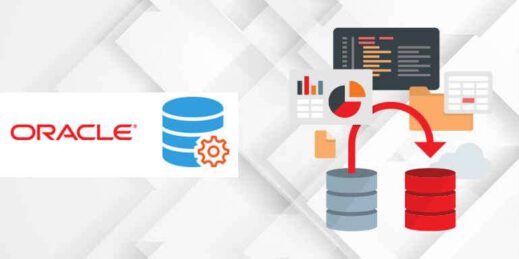
The purpose of LOB (Large Object) Data Types is to store large data. Ex. document (txt, word, excel, xml), pictures, video, audio and so on. This type of data was previously held in data types such as long, raw, long raw, and nowadays large objects are held in data types such as BLOB, CLOB, NCLOP. Data types such as long, raw and long raw are mostly used for old support.
BLOB: Stores data in binary format. Stores up to 128 TB of data. Files such as pictures and videos can be stored in this data type.
CLOB: Stores data as characters. Stores up to 128 TB of data. We can store the data in TXT files in the CLOB data type.
With Oracle 11g, Oracle Securefile structure has been announced to store the data types mentioned above. With Securefile, features such as compression in lobe areas, deduplicate encryption, cachinhg, and logging mechanisms have been introduced.
We’re starting. How to Convert Oracle Longs to CLOB;
create table LOGTABLE2
(
logid NUMBER not null,
register_no NUMBER not null,
datetime VARCHAR2 (20) not null,
method VARCHAR2 (100),
outgoing CLOB,
fromlog VARCHAR2 (4000)
COMPRESS FOR ALL OPERATIONS;
SELECT ‘alter table’
|| dba_lobs.own is
|| ‘.’
|| table_Name
|| ‘move lob (‘
|| column_name
|| ‘) store as SECUREFILE’
|| dba_lobs.segment_n Game
|| ‘(tablespace INDX COMPRESS HIGH);’
FROM dba_segments, dba_lobs
WHERE dba_lobs.segment_name = dba_segments.segment_name
AND dba_lobs.table_name = ‘LOGTABLE2’
alter table BUGRA.LOGTABLE2 move lob (GIDENLOG) store as SECUREFILE LOGTABLE_LOB0000122799C00005 $$ (tablespace INDX COMPRESS HIGH);
alter table BUGRA.LOGTABLE2 move lob (GIDENLOG) store as SECUREFILE LOGTABLE_LOB0000122799C00005 $$ (tablespace USERS);
declare
col_mapping varchar2 (1000);
BEGIN
col_mapping: =
‘LOGID LOGID,’ ||
‘REGISTER_NO REGISTER_NO,’ ||
‘DATETIME DATETIME,’ ||
‘METOD METOD,’ ||
‘to_lob (GIDENLOG) GIDENLOG,’ ||
‘GELENLOG GELENLOG’;
dbms_redefinition.start_redef_table (‘BUGRA’, ‘LOGTABLE’, ‘LOGTABLE2’, col_mapping);
END;
/
Copying table dependencies
DECLARE
num_errors PLS_INTEGER;
BEGIN
DBMS_REDEFINITION.COPY_TABLE_DEPENDENTS (‘BUGRA’, ‘LOGTABLE’, ‘LOGTABLE2’,
DBMS_REDEFINITION.CONS_ORIG_PARAMS, TRUE, TRUE, TRUE, TRUE, num_errors);
END;
/
select object_name, base_table_name, ddl_txt from DBA_REDEFINITION_ERRORS;
BEGIN
DBMS_REDEFINITION.SYNC_INTERIM_TABLE (‘BUGRA’, ‘LOGTABLE’, ‘LOGTABLE2’);
END;
/
BEGIN
DBMS_REDEFINITION.FINISH_REDEF_TABLE (‘BUGRA’, ‘LOGTABLE’, ‘LOGTABLE2’);
END;
/
drop table BUGRA.LOGTABLE2 cascade constraints purge;
desc BUGRA.LOGTABLE;
BEGIN
DBMS_REDEFINITION.ABORT_REDEF_TABLE (‘BUGRA’, ‘LOGTABLE’, ‘LOGTABLE2’);
END;
/
Tags: